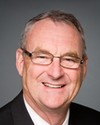If I may, I'll start with a more contemporary timeframe, perhaps the last couple of years, and then see how far back we'd like to move.
Officials in the department met with this committee about a year and a half ago, following a report of the Auditor General, who had reviewed the education envelopes in the department and made a number of observations and recommendations. The department appeared, and the committee asked for a departmental plan of action in relation to these recommendations. That plan of action was developed and tabled at this committee, I'm quite certain, along with presenting it to the Standing Committee on Public Accounts.
I had the pleasure of appearing at this committee then, and we went over the broad aspects of the education action plan, which focus on seeing a significant reduction in the education outcomes gap, primarily measured by secondary-level educational accomplishments—comparing aboriginal to non-aboriginal outcomes and, more specifically, first nation to non-first nation outcomes. We recognize there is a gap—it's well known—and the Auditor General recognized the gap.
The plan called for a concerted consultation with first nation leadership to develop a new policy framework for education. That work has been under way for several months, and we expect to see that framework emerge in the course of this summer. We had committed to bring that outcome, as well as all of the key outcomes from the work on that plan, to this committee, so the minister had committed to reporting to the committee on a regular basis.
A few months ago we sent to the committee—I don't think members here would have seen it, given the transition time, but I think it's available from the clerk—an updated document regarding the roles and responsibilities in education. The Auditor General observed that there was a lack of clarity in terms of the first nation roles, the first nation educator roles, the roles at the tribal council and their aggregate service level, and the roles of the department. So work was undertaken to clarify those roles and responsibilities, in cooperation with the first nation leadership. That document was developed and has been tabled before the committee.
In terms of improving the management of education outcome, another major piece is to develop better education outcome measurements—that is, better ways to measure successful education management and learner outcomes—and to fit these indicators into a management system that's useful—firstly, for first nation communities managing the education plan for their purposes and, secondly, for reporting to government from a perspective of accountability and sharing results.
So those are some of the major features in this education action plan. The development of the new plan is a major event for us, and it's progressing well. By and large, it's meeting the key targets, with a bit of slippage for a month or two in a few areas. The next major output will be the education policy framework that will be delivered to this table in a few months.




